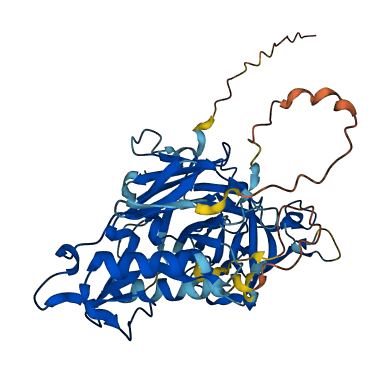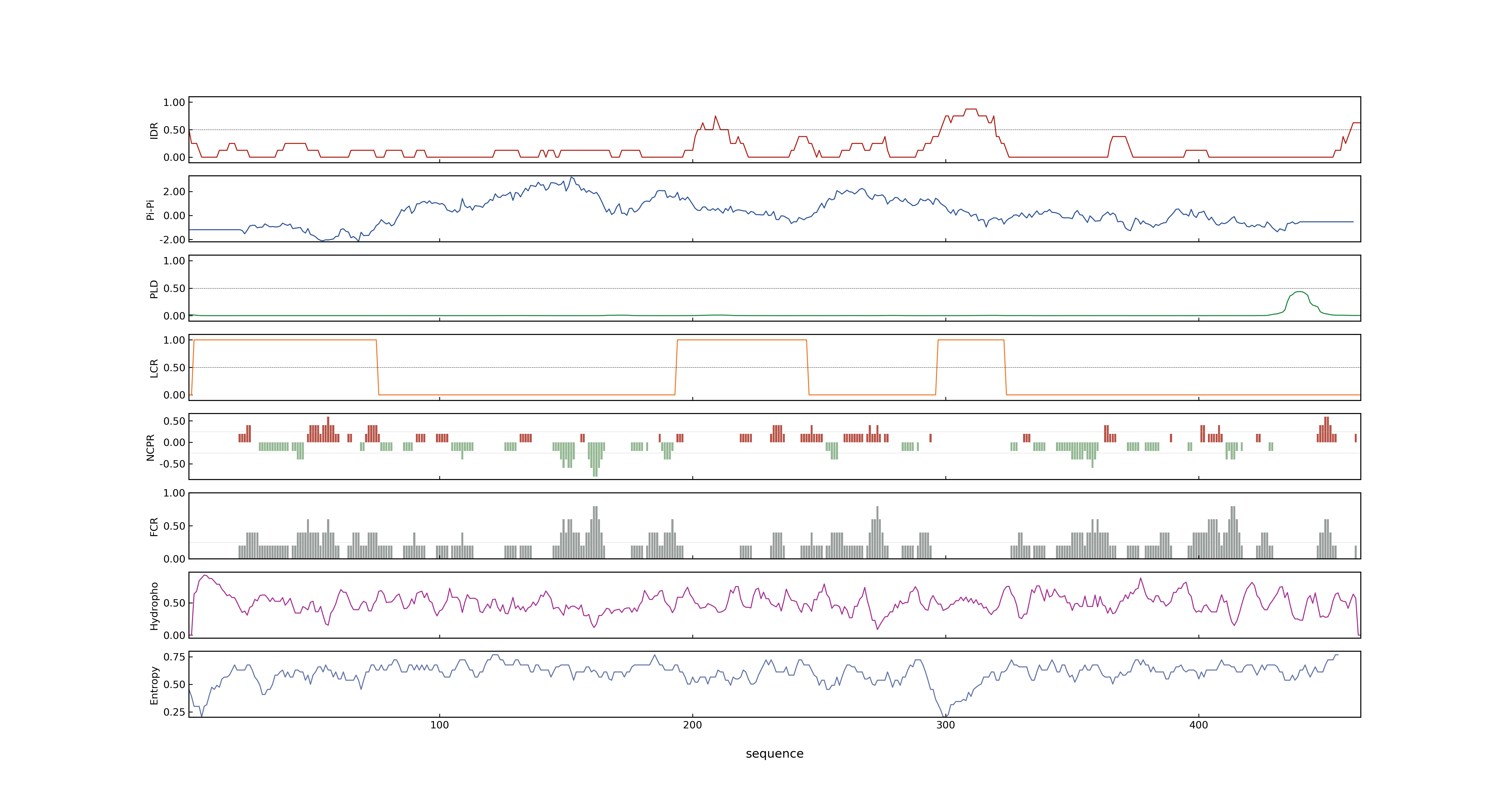- Information
- Symbol: OsAP37
- MSU: LOC_Os04g37570
- RAPdb: Os04g0448500
- PSP score
- LOC_Os04g37570.1: 0.1137
- PLAAC score
- LOC_Os04g37570.1: 0
- pLDDT score
- 82.72
- Protein Structure from AlphaFold and UniProt
- MolPhase score
- LOC_Os04g37570.1: 0.79016453
- MolPhase Result
- Publication
-
Genbank accession number
- Key message
- ETERNAL TAPETUM 1 directly regulates the expression of OsAP25 and OsAP37, which encode aspartic proteases that induce programmed cell death in both yeast and plants
- Connection
- OsAP25, OsAP37, EAT1 promotes tapetal cell death by regulating aspartic proteases during male reproductive development in rice, ETERNAL TAPETUM 1 directly regulates the expression of OsAP25 and OsAP37, which encode aspartic proteases that induce programmed cell death in both yeast and plants
- GUDK, OsAP37, Rice GROWTH UNDER DROUGHT KINASE is required for drought tolerance and grain yield under normal and drought stress conditions., Phosphoproteome profiling of the mutant followed by in vitro assays identified the transcription factor APETALA2/ETHYLENE RESPONSE FACTOR OsAP37 as a phosphorylation target of GUDK
- GUDK, OsAP37, Rice GROWTH UNDER DROUGHT KINASE is required for drought tolerance and grain yield under normal and drought stress conditions., Our transactivation assays confirmed that GUDK is required for activation of stress genes by OsAP37
- GUDK, OsAP37, Rice GROWTH UNDER DROUGHT KINASE is required for drought tolerance and grain yield under normal and drought stress conditions., We propose that GUDK mediates drought stress signaling through phosphorylation and activation of OsAP37, resulting in transcriptional activation of stress-regulated genes, which impart tolerance and improve yield under drought
- GUDK, OsAP37, Regulation of grain yield in rice under well-watered and drought stress conditions by GUDK., Recently, we functionally characterized a receptor-like cytoplasmic kinase, named GROWTH UNDER DROUGHT KINASE (GUDK), revealing its role in regulating grain yield under well-watered and drought stress conditions by transphosphorylating the OsAP37 transcription factor
- OsAP37, OsGI, Mutation of OsGIGANTEA Leads to Enhanced Tolerance to Polyethylene Glycol-Generated Osmotic Stress in Rice., In addition, qRT-PCR and microarray analysis revealed that the transcript abundance of some osmotic stress response genes, such as OsDREB1E, OsAP37, OsAP59, OsLIP9, OsLEA3, OsRAB16A, and OsSalT, was significantly higher in osgi than in WT plants, suggesting that OsGI might be a negative regulator in the osmotic stress response in rice
- AP59~OsBIERF3~OsAP59, OsAP37, Mutation of OsGIGANTEA Leads to Enhanced Tolerance to Polyethylene Glycol-Generated Osmotic Stress in Rice., In addition, qRT-PCR and microarray analysis revealed that the transcript abundance of some osmotic stress response genes, such as OsDREB1E, OsAP37, OsAP59, OsLIP9, OsLEA3, OsRAB16A, and OsSalT, was significantly higher in osgi than in WT plants, suggesting that OsGI might be a negative regulator in the osmotic stress response in rice
- OsAP37, OsDhn1~OsLip9, Mutation of OsGIGANTEA Leads to Enhanced Tolerance to Polyethylene Glycol-Generated Osmotic Stress in Rice., In addition, qRT-PCR and microarray analysis revealed that the transcript abundance of some osmotic stress response genes, such as OsDREB1E, OsAP37, OsAP59, OsLIP9, OsLEA3, OsRAB16A, and OsSalT, was significantly higher in osgi than in WT plants, suggesting that OsGI might be a negative regulator in the osmotic stress response in rice
- OsAP37, OsDREB1E~OsDREB1-1~CR350, Mutation of OsGIGANTEA Leads to Enhanced Tolerance to Polyethylene Glycol-Generated Osmotic Stress in Rice., In addition, qRT-PCR and microarray analysis revealed that the transcript abundance of some osmotic stress response genes, such as OsDREB1E, OsAP37, OsAP59, OsLIP9, OsLEA3, OsRAB16A, and OsSalT, was significantly higher in osgi than in WT plants, suggesting that OsGI might be a negative regulator in the osmotic stress response in rice
Prev Next

